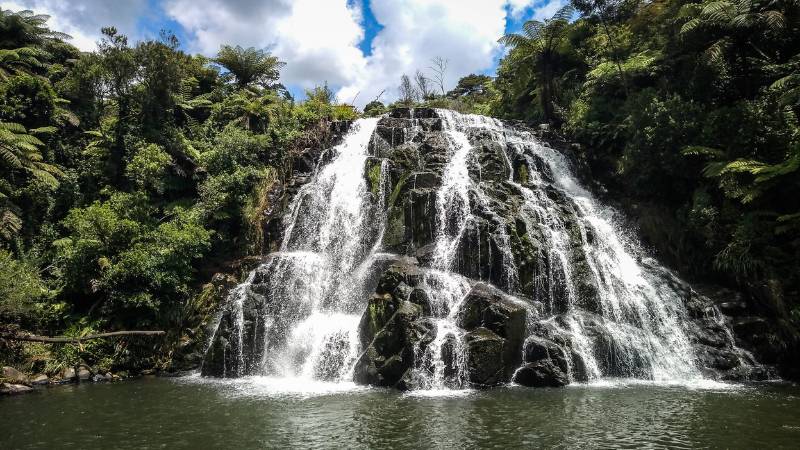New Zealand is a country known for its stunning landscapes, friendly people, and diverse climate. As a migrant preparing to move to this beautiful island nation, understanding New Zealand weather patterns is essential for your comfort and safety. In this guide, we will explore the unique weather conditions you can expect in different regions of New Zealand and provide you with valuable tips to help you navigate the elements successfully.
Understanding New Zealand's Geography
New Zealand consists of two main islands, the North Island and the South Island, along with numerous smaller islands. Its location in the southwestern Pacific Ocean exposes the country to a wide range of weather patterns, influenced by both ocean currents and mountain ranges.
The North Island: A Tale of Two Coasts
- The West Coast: Wet and Mild: The West Coast of the North Island, including regions such as Auckland and Wellington, experiences a maritime climate. It is characterized by mild temperatures, high humidity, and significant rainfall throughout the year. Rainfall is more evenly distributed across the seasons, but expect the occasional heavy downpour.
- The East Coast: Sun and Wind: The East Coast, which includes cities like Tauranga and Napier, experiences a drier and sunnier climate compared to the West Coast. Summers tend to be warm and dry, while winters are mild with occasional frost. However, the region is prone to strong winds, particularly during spring and early summer.
The South Island: Alpine Adventures and Coastal Charm
- Northern South Island: Four Seasons in a Day: The northern part of the South Island, encompassing Nelson and Marlborough, is known for its changeable weather. Here, it’s not uncommon to experience four seasons in a single day. The region receives a high amount of sunshine, but be prepared for sudden rain showers and temperature fluctuations.
- Central South Island: Alpine Extremes: Central South Island, including the famous tourist destinations of Queenstown and Wanaka, is renowned for its alpine climate. Summers are warm and dry, while winters bring snow and cold temperatures. If you plan to visit during winter, make sure to check weather conditions and road closures, especially in mountainous areas.
- Southern South Island: Rugged and Changeable: The southernmost part of the South Island, including Dunedin and Invercargill, experiences a cool temperate climate with more frequent rainfall and lower average temperatures. The weather here can be unpredictable, so layering clothing is recommended to adapt to sudden changes.
Tips for Dressing for New Zealand Weather
- Layer Your Clothing: New Zealand weather can change rapidly, so it’s essential to dress in layers that you can add or remove as needed.
- Always Carry a Waterproof Jacket: Given the country’s reputation for rain, a waterproof jacket is a must-have item in your wardrobe.
- Invest in Good-Quality Footwear: Whether you plan to hike, explore beaches, or stroll through cities, comfortable and waterproof footwear is vital.
Must-Have Gear for Outdoor Activities
- Sunscreen and Hat: New Zealand experiences high levels of ultraviolet (UV) radiation. Protect yourself from the sun’s harmful rays by wearing sunscreen and a wide-brimmed hat.
- Insect Repellent: Some regions, particularly in the summer, can have pesky sandflies and mosquitoes. Carry insect repellent to avoid bites.
- Outdoor Clothing: If you enjoy outdoor activities like hiking or skiing, invest in appropriate clothing, such as thermal layers, waterproof pants, and sturdy boots.
Safety Precautions and Emergency Preparedness
- Check Weather Forecasts: Before heading out for any outdoor activities, check the latest weather forecasts and any potential warnings or advisories.
- Be Aware of Natural Hazards: New Zealand is prone to earthquakes, tsunamis, and extreme weather events. Familiarize yourself with emergency procedures and follow official advice in case of any emergencies.
- Carry Essential Supplies: When embarking on remote adventures, ensure you have enough food, water, and warm clothing. Let someone know your plans and estimated return time.
Weather Apps and Resources to Stay Informed
- MetService: The official meteorological service of New Zealand provides accurate weather forecasts, warnings, and observations.
- Weather Apps: Download weather apps like MetService, YR, or Weather Underground for real-time weather updates and forecasts.
- Local Knowledge: Talk to locals or join online forums to gather firsthand information about specific regions and their microclimates.
Conclusion
New Zealand’s weather is as diverse as its landscape, and understanding its patterns is crucial for anyone planning to live or visit the country. By familiarizing yourself with the unique weather characteristics of different regions and following the tips provided, you’ll be well-prepared to navigate the elements and make the most of your time in the Land of the Long White Cloud. Remember to stay informed, stay safe, and embrace the beauty of New Zealand’s ever-changing weather.

